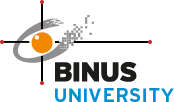Advanced Database Systems
Learning Outcomes
On successful completion of this Course, students will be able to: (1) Help the students to appreciate that database are widespread nowadays. The course discusses the development of the database approach and introduces the DBMS environment. The course is also to introduce the terminology and concepts of the relational model, which is now the dominant system for business applications; (2) Understand the purpose of the development lifecycle and how this cycle relates to the database system development lifecycle. To describe the activities associates with each stage of the database systems development lifecycle. To introduce the entity relationship (ER) model, a high-level conceptual data model, and to discuss the usefulness of this modelling technique in the database design. (3) Understand the concepts of object-oriented DBMS and object-relational DBMS as a major trend of the developments in the database systems area, which overcome the relational model problems. The aim of this course is to examine the object-oriented DBMS (OODBMS). The course first provides an introduction to object-oriented data models and persistent languages. (4) Capable to examine the object-relational DBMS as an alternative products in the market, and provide a detailed overview of the object management features that have been added to the new release of the SQL standard. Also includes in this course, the integration of the DBMS into the Web environment, to examines the appropriateness of the Web as a database application platform. (5) Understand the concepts of data warehousing and to discuss how these systems are capable of potentially delivering competitive advantage to an organization. The course also describes the relationship between data warehousing and Online Transaction Processing (OLAP) systems and to identify the main characteristics of this systems and to describe Online Analytical Processing (OLAP) and the main features associated with OLAP applications (6) Describe the concept of Data Mining (DM) and the main features of DM applications, the main characteristics of data mining operations and associated techniques, and the process of DM and the main features of DM tools
Topics
- Overview of Relational Data Model
- Relational Database Development
- Object Oriented Data model
- Object Oriented Database Design
- Object Relational Database System
- Object Definition Language (ODL)
- Guest Lecturer : Object Relational Definition and Query Language
- Data Warehousing Concepts
- Data Warehousing Designs
- On Line Applications Processing
- Data Mining Concepts
- Data Mining Applications
Published at :



SOCIAL MEDIA
Let’s relentlessly connected and get caught up each other.
Looking for tweets ...